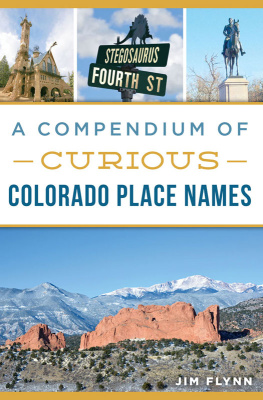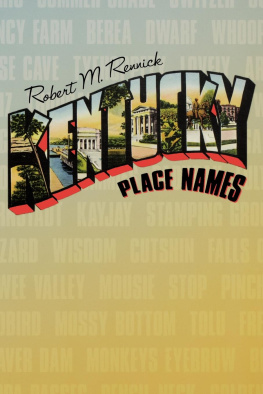Edward Callary - Texas Place Names
Here you can read online Edward Callary - Texas Place Names full text of the book (entire story) in english for free. Download pdf and epub, get meaning, cover and reviews about this ebook. year: 2020, publisher: University of Texas Press, genre: Home and family. Description of the work, (preface) as well as reviews are available. Best literature library LitArk.com created for fans of good reading and offers a wide selection of genres:
Romance novel
Science fiction
Adventure
Detective
Science
History
Home and family
Prose
Art
Politics
Computer
Non-fiction
Religion
Business
Children
Humor
Choose a favorite category and find really read worthwhile books. Enjoy immersion in the world of imagination, feel the emotions of the characters or learn something new for yourself, make an fascinating discovery.

- Book:Texas Place Names
- Author:
- Publisher:University of Texas Press
- Genre:
- Year:2020
- Rating:3 / 5
- Favourites:Add to favourites
- Your mark:
- 60
- 1
- 2
- 3
- 4
- 5
Texas Place Names: summary, description and annotation
We offer to read an annotation, description, summary or preface (depends on what the author of the book "Texas Place Names" wrote himself). If you haven't found the necessary information about the book — write in the comments, we will try to find it.
From Alice to Zephyr, this colorful compendium tells the story behind more than three thousand intriguing place names in Texas, revealing the turning points that put Dime Box, Shiner, and other distinctive appellations on the map.
Texas Place Names — read online for free the complete book (whole text) full work
Below is the text of the book, divided by pages. System saving the place of the last page read, allows you to conveniently read the book "Texas Place Names" online for free, without having to search again every time where you left off. Put a bookmark, and you can go to the page where you finished reading at any time.
Font size:
Interval:
Bookmark:
NUMBER TWENTY-TWO
Clifton and Shirley Caldwell Texas Heritage Series
Texas place Names
EDWARD CALLARY
WITH JEAN K. CALLARY

University of Texas Press,
Austin
Publication of this work was made possible in part by support from Clifton and Shirley Caldwell and a challenge grant from the National Endowment for the Humanities.
Copyright 2020 by the University of Texas Press
All rights reserved
First edition, 2020
Requests for permission to reproduce material from this work should be sent to:
Permissions
University of Texas Press
P.O. Box 7819
Austin, TX 78713-7819
utpress.utexas.edu/rp-form
Library of Congress Cataloging-in-Publication Data
Names: Callary, Edward, author. | Callary, Jean K., author.
Title: Texas place names / Edward Callary, Jean K. Callary.
Description: First edition. | Austin : University of Texas Press, 2020. | Includes bibliographical references and index.
Identifiers: LCCN 2019030203
ISBN 978-1-4773-2064-8 (paperback)
ISBN 978-1-4773-2065-5 (library e-book)
ISBN 978-1-4773-2066-2 (non-library e-book)
Subjects: LCSH: Names, GeographicalTexas. | TexasHistory.
Classification: LCC F384 .C35 2020 | DDC 976.4dc23
LC record available at https://lccn.loc.gov/2019030203
DOI:10.7560/320648
Dedicated to the memory of Fred Tarpley: Mister Texas Names
Contents
INTRODUCTION
This is a book about the place names of Texaswhere they came from and how they were created. We all have a natural interest in place names, especially odd and unusual names, of which Texas has its shareBug Tussel, Ding Dong, Telephone, Uncertainbut remarkable names are only a fraction of the thousands of names that make up the Texas namescape.
Place names dont just happen: They have a reason and a purpose. Texas place names tell stories about the people, places, and events that contributed to Texas history and its constantly changing culture. Consider Hanna Strobridge: Its late in 1882 and shes been reading a Jules Verne novel in which Marfa Strogoff is a central character. Given the opportunity to recommend a name for a new Texas town, she offered Marfa, and so it is today. In 1870 Ossamus Hitch Methvin climbed to the top of Rock Hill in Gregg County and was so impressed by the long view across the prairie that he named the railroad town Longview. In 1936 Dion McDonald opened a store in Delta County; contrary to his wishes the store, and later the community, became known as Jot Em Down after the fictional store kept by Lum and Abner on their popular radio show. In 1901 a new town was named Dalhart because it straddled the Dallam-Hartley county line, and in 2005 the town of Clark, north of Fort Worth, changed its name to Dish after Dish Network, offered free satellite TV service to all residents for ten years.
Texas is a big state, really bigover 270,000 square milesand needs many names for simple geolocation, for getting from one place to another. How many Texas place names are there? That depends on what you count, and when. Places may have had several names over time. They may change their names for reasons that are cultural (San Angela became San Angelo), historical (Waterloo became Austin), or strictly personal (Pease became Margaret in honor of the postmasters four-year-old daughter). Sometimes a town leaves a state (Booker moved south from Oklahoma to be close to a railroad line; most of Texhoma left Texas when the Oklahoma state line moved south), or even a country (Brownsville was no longer in Mexico after the 1848 Treaty of Guadalupe Hidalgo).
Then, too, Texas has its share of ghost towns. As the last residents move on, maps age and are consigned to archives, and the names of once flourishing places disappear from public view and private memory. Offsetting the loss of names, Texas, like most states, gains new names daily. There is constant naming or renaming of schools, parks, streets, and newly populated placesespecially residential tracts with names that are part pastoral lifestyle and part oxymoronWestlake Hills (Austin), The Falls at Dry Creek (Houston), Wolf Ranch (Georgetown).
The best estimate we have of the number of Texas names is from GNIS, the Geographic Names Information System, the nations digital gazetteer. As of early 2019, GNIS listed more than 115,000 Texas names. The greatest share, nearly 14,000, named churches; the least, a pair of tunnels (Baytown Tunnel in Harris County and the Quitaque Railway Tunnel in Floyd County) and a single crater (Odessa Meteor Crater in Ector County).
The Data
From the GNIS list we took the 10,188 names of Populated Places, added the names of the 254 Texas counties, added the names of cities and towns found in the 20192020 Texas Almanac that were not in GNIS, and spent the next three years tracking down place name origins in county and state histories; county, state, and community archives; theses and dissertations; historical society publications; church histories; personal diaries; local interviews; and websites beyond numberwherever reliable information on the sources of the names could be found. Several resources were especially valuable. The Handbook of Texas Online has been a constant and indispensable companion. However, because the Handbook, like all sources, is fallible, whenever possible the entries in this book have been verified from primary sources such as census records; birth, death, and marriage records; land survey records; property sale and tax records; cemetery inscriptions; and obituary notices.
In addition to the Handbook, we are indebted to the library of the Dolph Briscoe Center for American History at the University of Texas, Austin. The extensive Briscoe collection and the help we received from the Briscoes knowledgeable and personable staff, notably Catherine Best, are especially appreciated. Also of great value was the Fred Tarpley collection at the Gee Library, Texas A&M UniversityCommerce, and the help of archivist Michael Barera. Fred Tarpley, a student at what was then East Texas State Teachers College and a career faculty member at Texas A&MCommerce, was a master folklorist and an indefatigable collector of names, especially the names of northeast Texas. His books, field records, manuscripts, and clippings enlighten many of the entries in this book.
Pronunciation Guide
A broad transcription guide indicates local pronunciation where it might not be obvious from the spelling (Cuevitas [kwuh VEET uhs], DeKalb [dee KAB]). Residents of Wied live in the town of weed; Gruene is green; and if you dont want to be spotted as an outsider, when in Elgin remember to say [EL gin] (as in begin), not [EL jin].
Organization of the Entries
The content of entries varies according to the available information, but each entry begins with the place name followed by either the local pronunciation (if different from what the spelling would suggest) and the county of location (in parentheses). Some descriptions are briefthe name of an early settler or the first post office; others offer historical or cultural information if it adds to the source of the name or the circumstances surrounding its adoption. Post office information follows. Texas counties are included in the alphabetical entries, and precede identical place names.
Some examples:
NADA [NAY duh] (Colorado) Organized about 1890 by Czechs and Germans from the area around FRELSBURG. Named from Czech nadje, hope. PO 17 Apr 1894, PM William Engbrock.
NAT (Nacogdoches) Nathaniel (Nat) Jarrell was a dry goods salesman and the first postmaster 12 Apr 1895.
NATALIA (Medina) The Medina Irrigation Company founded Natalia in 1912, named for Natalie Pearson, daughter of engineer Frederick Stark Pearson who built the dam that created Medina Lake in 1913. PO 19 Mar 1913, PM Thomas Ragsdale. See Pearson.
Next pageFont size:
Interval:
Bookmark:
Similar books «Texas Place Names»
Look at similar books to Texas Place Names. We have selected literature similar in name and meaning in the hope of providing readers with more options to find new, interesting, not yet read works.
Discussion, reviews of the book Texas Place Names and just readers' own opinions. Leave your comments, write what you think about the work, its meaning or the main characters. Specify what exactly you liked and what you didn't like, and why you think so.







